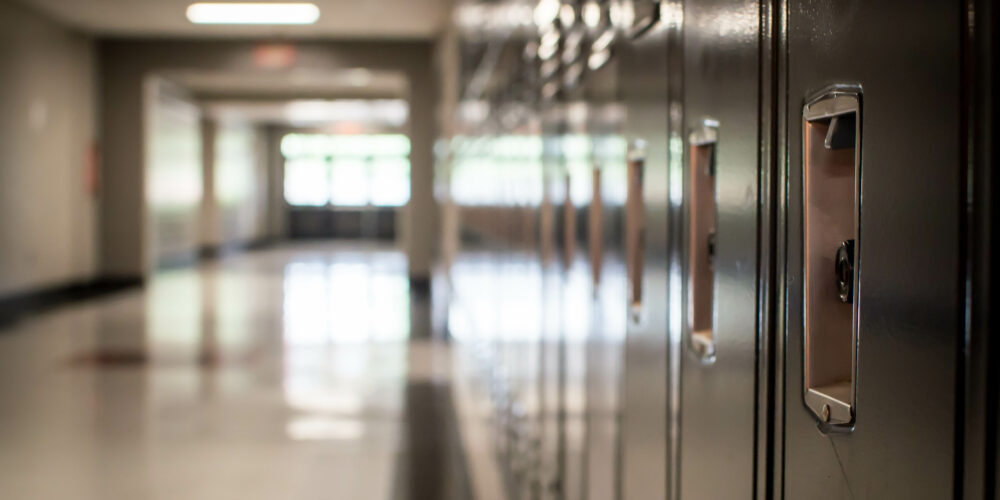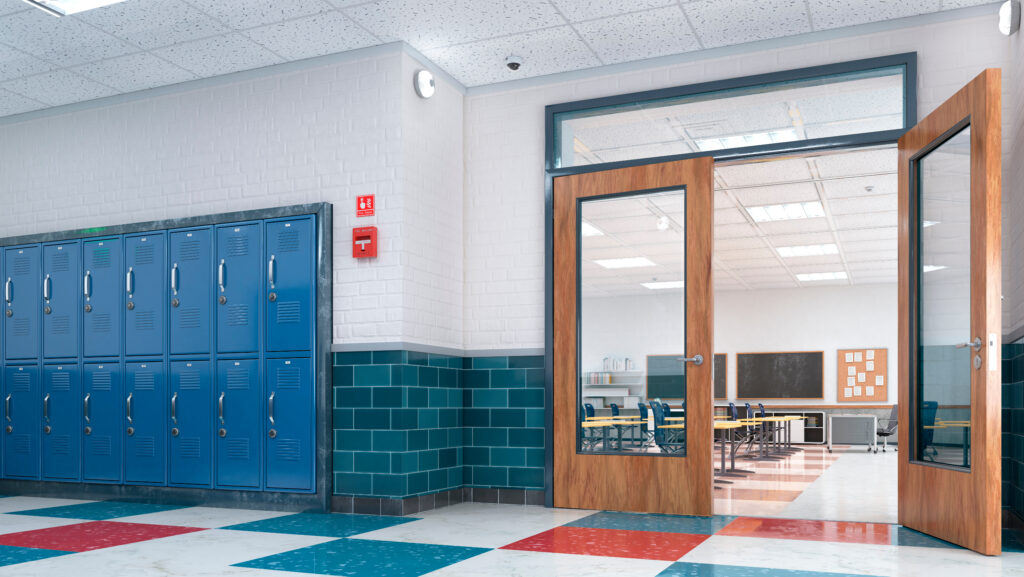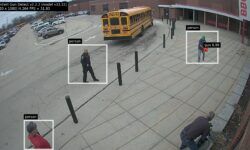The Importance of Audio in School Safety
Security in educational institutions combines technology, personnel training and emergency preparedness in a multi-layered approach.

Adobe Stock image by Jazmine
Ensuring the safety of students, staff, and faculty in K-12 schools is paramount.
Security in educational institutions goes beyond traditional measures, encompassing a multi-layered, multi-factor approach that combines technology, personnel training and emergency preparedness.
As threats evolve, so too must a school’s response efforts change through new or different tactics and technologies.
Most schools have a public address system for broadcasting morning announcements, paging and triggering bells that signal the start and end of a classroom period and a separate system for emergencies that uses a horn or siren and flashing lights, but not voice.
Those emergency alerts are not typically tied into the public address system, and maintaining separate systems no longer meets the needs of today’s emergency preparedness. Hearing instructions audibly and intelligibly can be critical for ensuring the safety of the school’s occupants.
The Most Critical Component of a Lockdown Plan
In high-stress situations, every second counts. The ability to convey information quickly through a PA system reduces the time it takes to disseminate instructions, enabling a more rapid and coordinated response to emergencies.
Coordination among staff, security personnel, and emergency responders is vital in a crisis. A PA system facilitates real-time communication, allowing stakeholders to coordinate their efforts and respond effectively.
Many American schools have used their communications technology daily for over a decade. But in recent years, school communications technology has come a long way, particularly given its importance in threat situations.
Former Pierce County SWAT Team member and school security expert Jesus Villahermosa, Jr. believes the public address system is the most crucial technology a school owns during an active threat incident.
Schools with audio communications systems older than 10 years need to be aware of the advancements made to the technology. The latest modern communications deliver far greater capabilities than their predecessors and the systems are becoming increasingly integrated, providing multiple operational benefits to schools.
Beyond emergencies, PA systems are valuable for making routine announcements, giving instructions, and providing information about school activities. This regular use helps establish familiarity with the system, ensuring that students and staff pay attention when important safety messages are broadcast.
During fire drills or other situations requiring evacuation, a PA system can guide students and staff through the evacuation process. Clear and audible instructions help ensure that everyone moves to designated assembly points in an organized and efficient manner.
The Importance of Staff, Student and Parent Training
Regular drills and simulations are invaluable for preparing students and staff for emergencies. Conducting fire drills, lockdown drills, and other emergency response exercises ensures that individuals understand and can execute predefined protocols.
Establishing crisis intervention teams within schools ensures that designated individuals are equipped to handle specific crises and de-escalate potential threats. These teams play a pivotal role in fostering a safe and supportive school environment.
Establishing strong partnerships with local law enforcement, fire departments, and emergency medical services during simulations and beyond is vital. Collaborative efforts enable a swift and coordinated response in the event of an emergency, maximizing the effectiveness of emergency preparedness plans.
Engaging parents and the broader community in school security efforts is crucial. Open communication channels, community forums, and workshops contribute to a shared responsibility for creating a safe learning environment.
Empowering students to be active participants in their own safety fosters a sense of responsibility. Programs that educate students on recognizing and reporting potential threats contribute to the overall security culture.

Adobe Stock image by sveta
Using Tech to Enhance Safety Notification Systems
Where older PA systems require a person to make announcements from a single location, such as the main office, modern systems allow administrators to initiate communications from a mobile device wherever they are in school.
Mobile accessibility is far more desirable during a threat situation. An authorized staff member can activate the system from the parking lot, hallway, or playground with a cascading set of automated actions that the schools set up, including notifying first responders and making live or pre-recorded announcements through the PA system.
Newer systems can also integrate with mobile silent panic buttons in accordance with Alyssa’s Law or send automated mobile emergency notifications instantly via text to law enforcement, staff, and students. Every second matters in a threatening situation; this technology helps people on campus act faster and law enforcement to mobilize and get to the scene more rapidly.
Although local fire codes require schools to install fire alarms separately, the fire alarms can be integrated into modern communication systems and automatically activate pre-programmed announcements and messaging when a fire alarm occurs.
Final Thoughts on Audio in School Safety
School communications systems need to work every day, without fail. When evaluating technology in an upgrade, school IT and AV teams should huddle with as many teams as possible, from administrators, law enforcement and even the school board, to discuss needs.
A well-functioning public address system is critical to a school’s safety infrastructure. It enables effective communication, coordination, and response during emergencies, contributing to the overall safety and well-being of students, staff, and visitors. Regular maintenance, testing, and staff training are essential to ensure the reliability and effectiveness of the PA system.
Improving a school’s communication system offers schools numerous benefits, particularly during emergencies. Modern systems help schools operate more efficiently and help deliver messages more effectively and faster.
In a crisis, speed is vital. The faster schools can activate an emergency response system and announce and guide staff and students on what to do or where to go, the safer a school will be.
Michael Peveler is vice president of sales at AtlasIED.
If you enjoyed this article and want to receive more valuable industry content like this, click here to sign up for our FREE digital newsletters!

Security Is Our Business, Too
For professionals who recommend, buy and install all types of electronic security equipment, a free subscription to Commercial Integrator + Security Sales & Integration is like having a consultant on call. You’ll find an ideal balance of technology and business coverage, with installation tips and techniques for products and updates on how to add to your bottom line.
A FREE subscription to the top resource for security and integration industry will prove to be invaluable.













